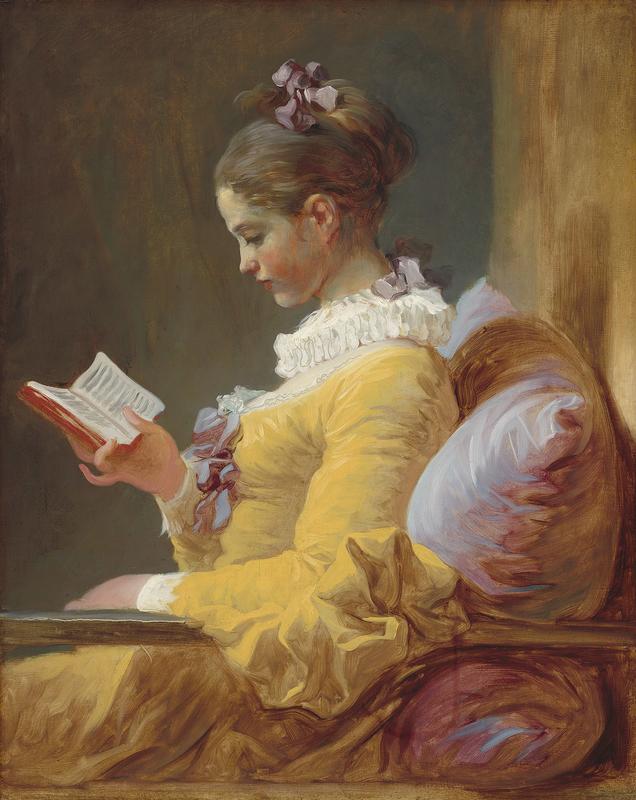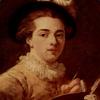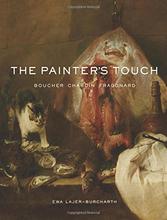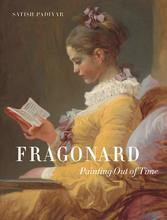More about Young Girl Reading
- All
- Info
- Shop

Contributor
Jean-Honoré Fragonard has a habit of painting young girls doing potentially dangerous things.
For example, his famous (for a few reasons) The Swing depicts the patron’s mistress floating precariously on the apex of the swing’s path. The danger in Young Girl Reading is perhaps less acute, but the contemporary version might have her lounging in bed scrolling through her instagram feed (probably full of Kardashians and K-Pop idols) while pulling on a Juul. You know, she isn’t going to fall and die, but mom and dad are definitely not stoked—also you know, isn’t she cute?
Young Girl Reading is widely beloved. And of course, just look at her, such posture, such focus, but still so soft and yellow and pretty. So there was a ruckus in the academic art world when researchers discovered that the yung grrl was originally meant to be middle-aged woman making coy eye-contact with the viewer. This threw people for a loop because in the 18th century, novels were a scandalous thing that kept girls distracted from preparing for life as a woman. The young girl reading maybe lives on the edge a little bit, despite her appearance as a model daughter, but she is also chastely absorbed in her book, which could as easily be a volume on table manners as a copy of the kama sutra. The aloof maybe-danger, maybe-virtue adds to her charisma. For a grown woman, with children and household duties (presumably), reading a book was like abandoning your family to join the circus, and what was cute when she was fifteen becomes condemnable at thirty.
Fun fact: novels were vilified in the 18th century the same way that smartphones are now. A moral panic swept Europe around the popularization of novel reading. All of the sudden the misogyny-informed shortcomings of women were evinced in their self-absorbed addiction to novels. Sociologist Ana Vogrinčič quotes this attitude, “I have actually seen mothers, in miserable garrets, crying for the imaginary distress of an heroine, while their children were crying for bread.” WAY dramatic and definitely not true, but such was the climate in which Fragonard painted this charming young woman, reading a book and not unthreading the social fabric of humanity. While images of girls reading would become less offensive in the 19th century, in Fragonard's time they hovered between being morally ambiguous and being suggestive of temptation and outright depravity.
The underpainting becomes way more socially charged in this context. An older woman teasing the viewer while reading might actually be asking for social condemnation. The young girl is probably not neglecting any kiddos or cleaning. She may be soiling her innocence by reading about imprudent heroines, and a strict governess would def send her right off to learn something useful like needlepoint or whatever, but she isn’t the manifestation of our species’ extinction. The young girl, with her problematic status as an archetype, becomes a safe way to challenge the panic around novel reading. It casts the question “are you sure books are the problem?” in abstract terms, instead of just blaming the actual culprit: reductive and patriarchal enlightenment values.
Sources
- Albinson, Cassandra. “Lecture—Fragonard’s Young Girl Reading: New Perspectives.” Harvard Art Museums. YouTube video. 1:27:29. Published July 29, 2017. Accessed July 9, 2018. https://www.youtube.com/watch?v=yZ8ovJHHw4U
- “Research reveals significantly different composition in Jean Honoré Frgonard’s Young Girl Reading.” artdaily.org. 2017. Accessed July 9, 2018. http://artdaily.com/news/77636/Research-reveals-significantly-different…-
- Vogrinčič, Ana. “The Novel-Reading Panic in 18th-Century England: An Outline of an Early Moral Media Panic.” Medijska istraživajna. Volume 14, Number 2 (2008). Pages 103-124. Accessed July 9, 2018. https://hrcak.srce.hr/file/49661
Featured Content
Here is what Wikipedia says about A Young Girl Reading

Young Girl Reading, or The Reader (French: La Liseuse), is an 18th-century oil painting by Jean-Honoré Fragonard. It depicts an unidentified girl seated in profile, wearing a lemon yellow dress with white ruff collar and cuffs and purple ribbons, and reading from a small book held in her right hand. The painting is in the National Gallery of Art in Washington, DC.
Check out the full Wikipedia article about A Young Girl Reading














